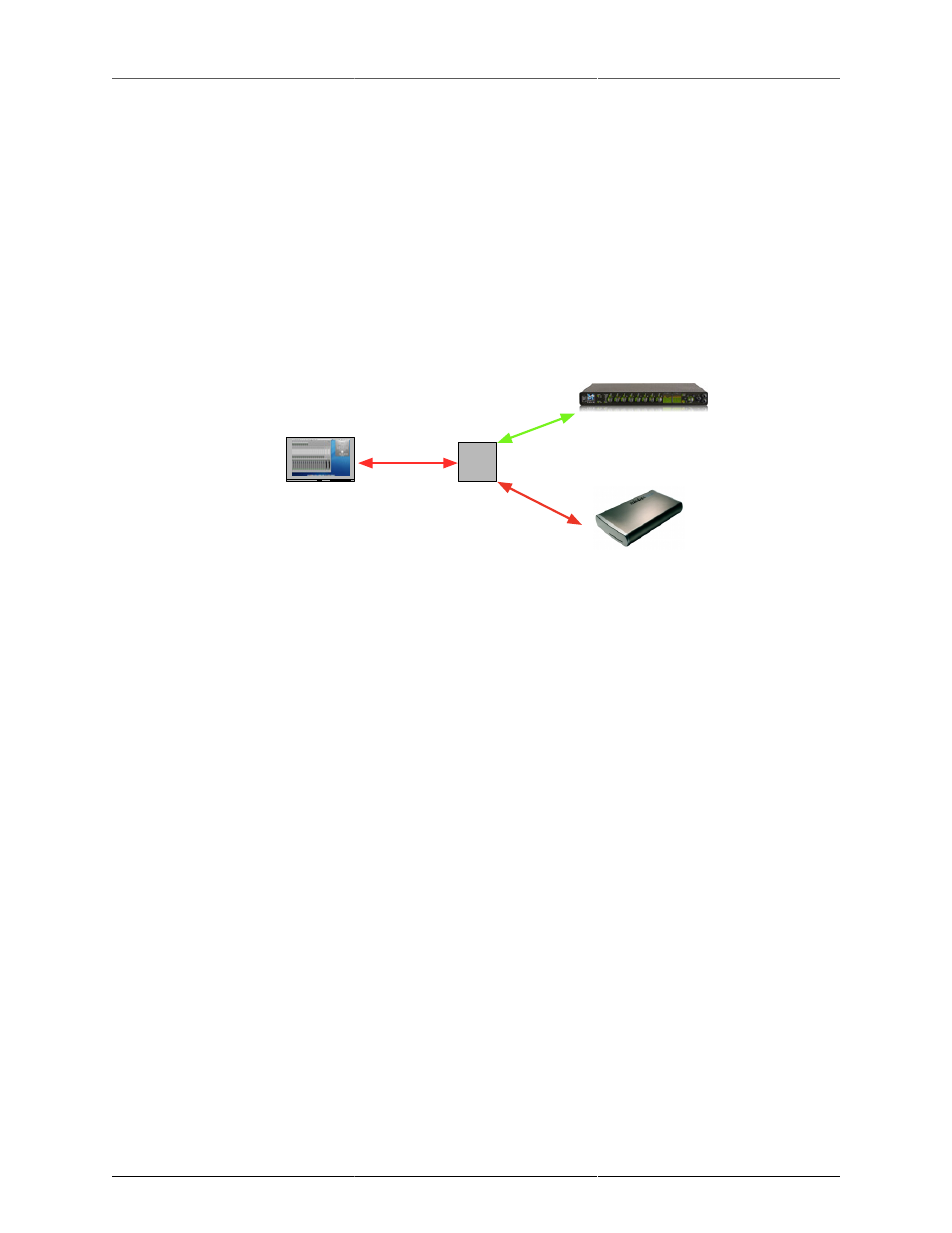D.3. using a hub in a mixed speed chain – Metric Halo Mobile I/O User Manual
Page 328

FireWire
328
The FW800 device’s speed is reduced to 400 Mbs, since the slower device is connected between it
and the computer.
If you keep the FW800 connections together those devices will run at 800 Mbs regardless of whether
there are FW400 devices in the chain. If you intermix FW800 and FW400 devices, you will lose bus
speed on any FW800 device connected after a FW400 device.
• “Using a FW hub will speed up my connection.” -Not exactly…
A hub won’t speed up your FW bus, but will allow all devices connected to it to run at their maximum
speed. If a FW800 hub is connected to the computer with a FW800 cable, then all the FW800 connec-
tions to the hub will run at 800 Mbs, and all FW400 connections will run at 400 Mbs. The connection
between the computer and the hub will switch between 800 Mbs and 400 Mbs on a per-packet basis
depending on the speed of the source or destination of the packet (source for inbound to the computer,
destination for outbound from the computer).
FW800 host
computer
FW800 device
FW400 device
FW800
FW400
FW800
hub
Figure D.3: Using a Hub in a Mixed Speed Chain
The other advantages of a hub are:
1. External hubs usually provide power isolation, so bad cables or faulty devices can’t damage your
computer’s or device’s FW ports.
2. Easier patching; you don’t have to shut down an entire FW chain to unpatch or shut off a device
in the middle.
METRIC HALO SPECIFIC:
• “How many boxes can I use on one FireWire bus?”
This depends on the sample rate you’re working in. You can currently use three interfaces on one bus
at 44.1-48 kHz, and two at 88.2-192 kHz.
• “Can I attach hard drives or more interfaces to the second FireWire port on my MIO?”
Yes, with two things to remember:
1. Remember the rules about connecting FW800 and FW400 devices on the same bus.
2. If you’re recording at high track counts or sample rates, you may need to connect your hard drive to
another bus (or another type of bus, like SATA).
• “I can’t expand my Mac, so I can’t add another FW bus or SATA bus. How can I work with high track
counts?”
Try using a USB 2 drive. While you want FireWire’s isochronous transfers to get audio into your com-
puter, asynchronous transfers to your hard drive are fine. If you are having dropouts, noise or other
problems in your audio chain with your interface and drive on the same bus, try connecting the hard
drive via USB to lighten the load on your FW bus. Even if you decide not to use the USB drive full time,
this is a good troubleshooting tool.